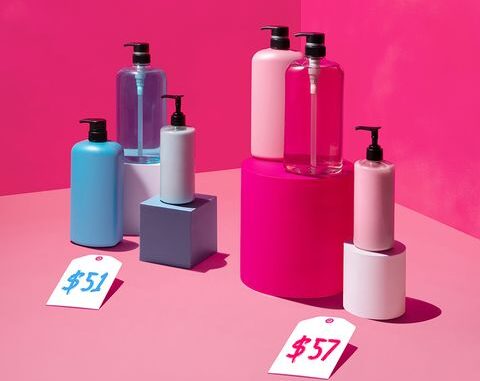
Gov. Andrew Cuomo’s new “pink tax” ban went into effect on Sept. 30.
According to a press release from Gov. Cuomo’s office, “The new measure requires certain service providers to provide price lists for standard services upon request and notifies them that gender-based price discrimination is prohibited under State law.” The businesses that don’t comply with the new ban will face “civil penalties,” including fines of $250 for the first offense and $500 for any following offenses.
When prices are significantly different between “substantially similar goods and services” because one is marketed toward a specific gender, it is known as “pink tax.”
“Substantially similar goods and services” are two things that have very few differences in materials, intended use, time of production or service, etc.
There have been multiple studies over the last three decades that demonstrate that this issue disproportionately affects women, causing them to pay more than men for the same goods and services. Women, on average, also earn less than men, which means they are both paid less and yet pay more.
“New York is leading the nation in advancing women’s rights and this milestone marks the latest step in New York’s journey to break down barriers and put women on an equal playing field,” Gov. Cuomo said in the press release. “By abolishing the pink tax, women and girls will no longer be subject to harmful and unfair price discrimination and any businesses who fail to put an end to this despicable practice will be held accountable.”
“It needs to be done, it’s obvious,” said Dr. Edith Kuiper, chair of the Economics Department and associate professor of Women’s, Gender & Sexuality Department at SUNY New Paltz. “It is a simple clear-cut law that is self-evidently necessary once you think about it. When the costs of the production of a good are covered by the price, making goods designed for women and girls more expensive is unfair and that needs to be banned.”
There are concerns about how the tax ban will be implemented. Dr. Kuiper brought up the hypothetical of running shoes, where one pair of shoes with a blue line cost $200, while the same pair of shoes, with just the difference of a pink line, costs $230. The company has two options, to either lower the price of the shoes marketed toward women and girls (the one with the pink line), to $200, or the company can raise the price of the shoe marketed toward men (the one with the blue line) to $230.
This conundrum runs deeper than just what price the consumer pays, though. There is an incentive for the state government to allow companies to raise the price of the product marketed to men, to the price of the product marketed to women because it increases state and federal sales tax, according to Dr. Kuiper.
This issue raises the predicament of implementation.
“Implementation isn’t always the strongest side of policy,” Dr. Kuiper said. “If, for instance, customers have to sue a business for price discrimination, this will take a lot of time, energy and probably money for the customer, and will only address individual cases.”
Dr. Kuiper suggested that something Gov. Cuomo could create good publicity for this new law is to increase awareness of it amongst businesses so that the law is enforced, and to work with the Chamber of Commerce to ensure that the law is being enforced, rather than just relying on consumers to come forward.
However, raising awareness just to ensure businesses comply isn’t enough. It should also be raised among the general public so more people can be aware of economic gender-discrimination. And there is still much more to be done to ensure the economic equality of all women, because as Dr. Kuiper points out, “the Women’s Justice Agenda is still a rather white endeavor.”
“I think we need to stop talking about gender-discrimination as if it is isolated from racial discrimination, and other forms of discrimination,” Dr. Kuiper said. “More attention should be paid to specific difficulties African American women and girls face building wealth, and in addressing the racial wage gap. African American women earn about 35% less than white men and Hispanic women earn about 50% less than white men.”
While the “pink tax” ban is an excellent step forward for New York state, there is still much to be done to fight for gender equality.
